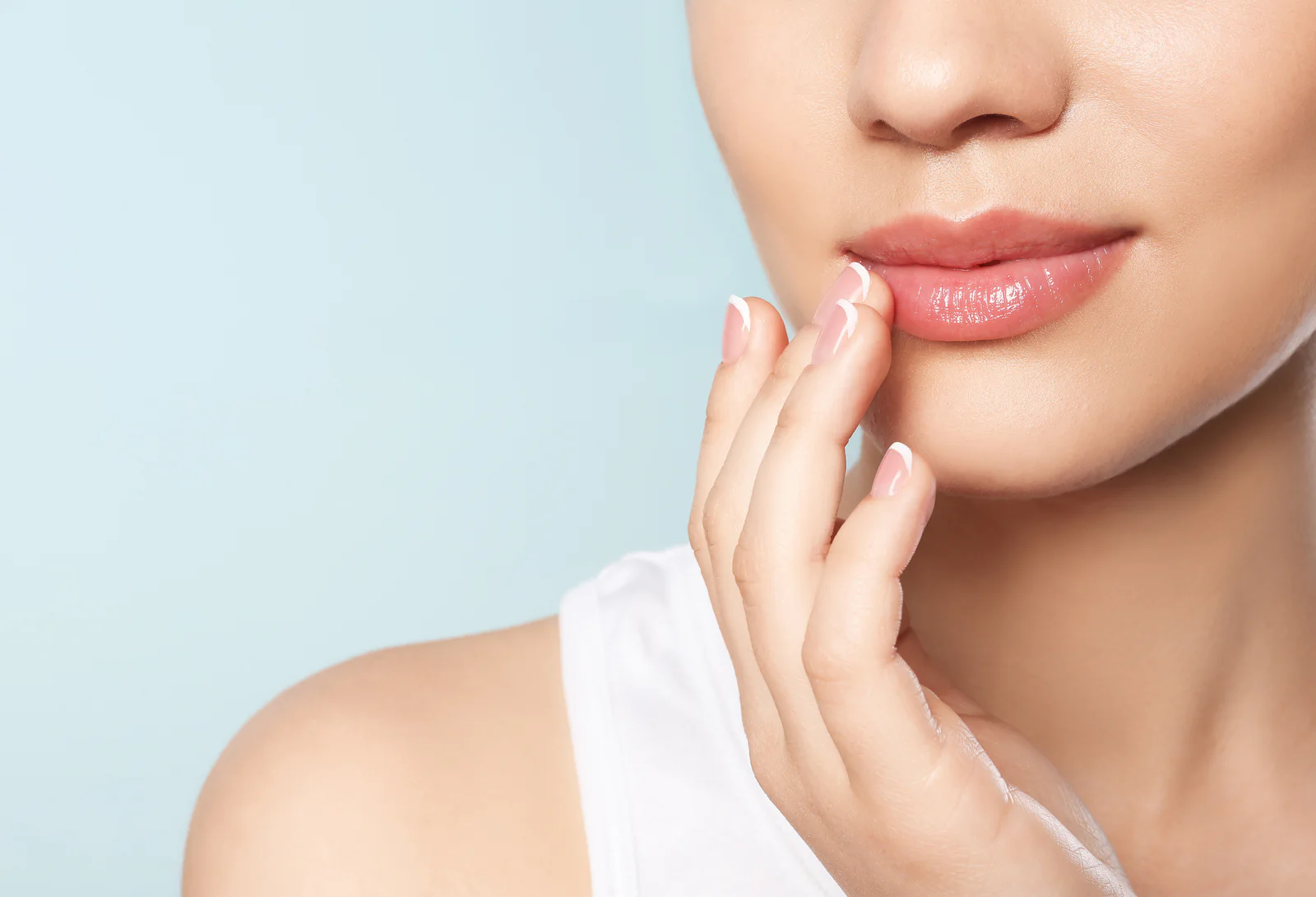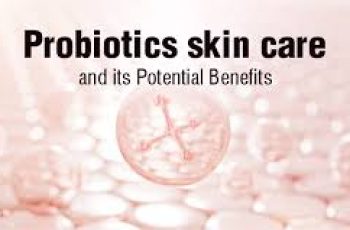As the colder months set in and the winter winds start to dry out our skin, you might find yourself reaching for lip balm more often to tackle those chapped lips. But despite the constant application, your lips may still feel cracked and dry. If you’ve wondered whether hyaluronic acid (HA) can help with this, you’re not alone! In this blog post, we’ll explore the benefits of using hyaluronic acid on your lips and how it can keep them plumped, hydrated, and smooth.
What is Hyaluronic Acid?
Hyaluronic acid (HA) is a naturally occurring sugar in the body that helps retain moisture. It’s also widely used in skincare products due to its ability to hold up to 1,000 times its weight in water. As a humectant, it draws moisture from the air or surrounding products and locks it into the skin, helping to keep your skin hydrated, plumped, and protected from environmental aggressors like UV rays, pollution, and free radicals.
When applied topically, hyaluronic acid can help reduce signs of aging like fine lines and wrinkles, while also improving skin texture and elasticity by boosting collagen and elastin production. But what happens when you apply it to your lips? Let’s find out!
What Happens If You Put Hyaluronic Acid on Your Lips?
Just like the rest of your face, your lips are prone to losing moisture throughout the day, especially during colder weather. When you apply hyaluronic acid to your lips, the ingredient draws moisture in from the air and locks it in, leaving your lips soft, smooth, and hydrated.
This hydration helps to reduce signs of dryness, cracks, and irritation, and can even make your lips appear slightly plumper. While topical hyaluronic acid won’t give you the same plumping effect as injectable lip fillers, it does a great job of hydrating the lips and giving them a fuller, more youthful appearance.
Is Hyaluronic Acid Good for Lip Lines?
Absolutely! Hyaluronic acid is fantastic for reducing the appearance of fine lines and wrinkles around the lips. By boosting hydration in the skin, HA can smooth out the delicate skin around the mouth, helping to reduce the appearance of lip lines.
For deeper, more static lines (those that are visible even when your mouth is relaxed), topical hyaluronic acid can offer temporary improvement, but you may need a more targeted anti-aging treatment for more dramatic results. If you’re considering treatments for deeper lines, it’s always a good idea to consult with a dermatologist or aesthetic professional to discuss options that are best suited to your needs.
How Do I Use Hyaluronic Acid to Plump My Lips?
If you think of your lips like a balloon that’s starting to deflate—losing its firmness and appearing wrinkled—the same can happen when your lips are dehydrated. Applying hyaluronic acid to your lips helps to fill each skin cell with moisture, which can plump them up and reduce fine lines and cracks.
Hyaluronic acid lip serums or balms are ideal for this purpose. These products can provide a subtle, natural plumping effect, making your lips look fuller and more youthful. Unlike the bee-sting plumping lip glosses of the past, which often caused discomfort, hyaluronic acid hydrates your lips without the stinging sensation.
Does Hyaluronic Acid Lighten Lips?
Yes, hyaluronic acid can help lighten dark spots or pigmentation around the lips. By strengthening the skin barrier and providing deep hydration, HA helps to combat free radical damage, which is a key factor in skin discoloration and dark spots. Over time, regular use of hyaluronic acid can help even out skin tone and reduce the appearance of pigmentation, leading to brighter, more even-colored lips.
Will Putting Hyaluronic Acid on My Lips Make Them Bigger?
Hyaluronic acid can indeed help give your lips a fuller appearance—just not to the same extent as injectable lip fillers. While topical HA won’t give you the dramatic plumpness of a filler treatment, it does provide visible hydration and smoothing, which can make your lips look smoother, softer, and more voluminous.
If you’re looking for a more pronounced, permanent plumping effect, injectable fillers using hyaluronic acid are an option to consider. However, if you simply want hydrated, smoother, and fuller-looking lips without the needle, using a lip balm or serum with hyaluronic acid can be a great non-invasive alternative.
Can I Use Face Serum on My Lips?
Yes! You can absolutely use a face serum enriched with hyaluronic acid on your lips. Face serums are formulated to penetrate deeper layers of the skin, so they can work wonders in combating chapped lips and offering deep hydration. If you don’t want to use your regular serum on your lips, there are also plenty of lip-specific products—such as lip masks, balms, and treatments—formulated with hyaluronic acid that are perfect for tackling dry, cracked lips.
Final Thoughts: Can You Use Hyaluronic Acid on Your Lips?
In short: yes! Hyaluronic acid is a fantastic ingredient for your lips. Whether you’re dealing with dry, cracked lips or looking to smooth out lip lines, hyaluronic acid can hydrate, plump, and refresh the skin around your mouth. It’s also great for lightening dark spots and enhancing the overall appearance of your lips, giving them a softer, smoother, and more youthful look.
If you want to keep your lips hydrated and plumped, try incorporating a hyaluronic acid lip balm or serum into your daily routine. You’ll find that your lips will feel much softer and look more hydrated, without the need for invasive treatments.
Got any more questions or want to chat about lip care? Don’t hesitate to reach out via Instagram! We’re always happy to help.
DQH Knowledge drop: In your 20s, your skin cell turnover decreases. (Cell turnover is a key component in keeping your skin youthful.) You know what else slows down? Your collagen production. Starting in your 20s, collagen decreases by about 1 percent per year. Should you want to prevent fine lines and wrinkles, start by eliminating behaviors that contribute to premature aging. “If it’s bad for you, it’s bad for your skin,” says dermatologist Michel Somenek.
“Cigarette smoking reduces blood flow to the skin and causes premature wrinkling and a dull skin texture. Making the repeated pursed motion to inhale can also cause smoker’s lines. Alcohol and recreational drugs are toxins for the skin that damage its cellular structure and DNA,” Somenek tells us. “The faster you eliminate vices while you are young, the better chance your skin and body have to recuperate.” Also, adopting an anti-aging routine in your 20s is key. After all, the best offense is a good defense. We spoke to Somenek and experts Joshua Ross and Audrey Kunin to find out more.
Keep reading for the best anti-aging products for your 20s, according to skincare professionals.
Sunscreen
“We all know that the sun is the number one cause of skin aging and starting the prevention in your 20s is very important,” Ross says. “The majority of your sun damage won’t start to appear until you’re in your 30s, so don’t wait until you see it surface or you’ll be behind the curve. Stay ahead of it with a good-quality zinc-based sunscreen worn daily.”
Farmacy Green Defense Daily Mineral Sunscreen
An invisible sunscreen with SPF 30, plus botanical extracts meant to protect skin with tons of antioxidants. Bonus: It’s clean and fine to use under makeup.
Bareminerals Complexion Rescue™ Tinted Moisturizer Broad Spectrum SPF 30
Although we recommend you use your SPF and moisturizer separately, we also understand moments when you don’t have time or energy for that extra step. For those times, this bareMinerals moisturizer is a great thing to have on hand.
Vitamin C Serum
“A great introduction to anti-aging is to start with a vitamin C serum in your morning skincare routine,” Ross says. “It’s a powerful antioxidant that will neutralize free radicals and brighten the skin.” He adds that it’s a great way to counteract the effects of the sun’s harmful rays, which, as previously mentioned, are among the biggest causes of premature aging.
Drunk Elephant C-Firma™ Vitamin C Day Serum
The Drunk Elephant C-Firma is a lightweight serum that promises to give skin a glow by combining the brightening powers of vitamin C with ferulic acid, l-ascorbic acid, and vitamin E. The included sodium hyaluronate is meant to replace hydration loss, so you shouldn’t have to deal with any irritation.
Sunday Riley C.E.O. Rapid Flash Brightening Serum
This potent serum is jam-packed with vitamin C (15 percent, to be exact), which means it’s a potential superstar at both brightening skin and dousing it in antioxidants.
Peptides
Using peptides on your skin has many benefits, says Somenek. “The skin barrier is what defends the body against pollution, UV rays, bacteria, and toxins. It can be damaged by several everyday factors. Using topical peptides aids in building a stronger barrier,” he says. “Peptides comprise elastic fibers, which are a type of protein. These fibers help to make skin appear taut and firm. Peptides can also help repair damaged skin, relieve inflammation, and even out skin tone. Some peptides can kill acne-causing bacteria that is common in 20-somethings.”
Kunin agrees, saying, “Peptides are an excellent entry point for supporting collagen.” She recommends looking for face and eye treatments that contain these collagen-boosting powerhouses.
Charlotte Tilbury Magic Eye Rescue Cream
This Charlotte Tilbury super-emollient eye cream has a base of coconut oil and shea butter (read: it’s incredibly hydrating). Botanicals plus peptides are meant to help reduce dark circles and boost collagen, respectively.
This creamy moisturizer serves up potent collagen-boosting peptides and pycnogenol, and antioxidant-rich vitamin C. “Instead of sitting on top of the skin, peptides penetrate the outer layer so they go deep. The ‘signals’ they send tell the cells to produce elastin and collagen, which are needed for youthful-looking skin,” explains Somenek.
At-Home Peel Pads
Remember that skin cell turnover fiasco we talked about earlier? One way to help support it is by exfoliating. “Exfoliation is important to help keep skin fresh and luminous,” Kunin says. She recommends using at-home peel pads as an easy and effective way to exfoliate.
“The goal in your 20s is to fight the slowing pace of cell turnover. It is wise to use products that gently exfoliate, yet still remove oil and other impurities. Products that have Alpha Hydroxy Acids (AHA) or Beta Hydroxy Acids (BHA) are a good choice.”
According to Somenek, you should only exfoliate two to three times a week. “People of all ages are guilty of over-exfoliating and that can be too much of a good thing,” he says.
Dermadoctor Kakadu C Intensive Vitamin C Peel Pad
A few swipes of this Derma Doctor powerful peel pad promise to leave your skin glowing and smooth, thanks to the seven (yes, seven) types of chemical exfoliants, including AHA and BHA. It also contains vitamin C via Kakadu plum extract for added brightening and antioxidant protection.
KEY INGREDIENTS Kakadu plum extract is sourced from the Kakadu plum, a fruit grown in northern Australia. It contains vitamin C, which restores the skin’s natural barrier, increases collagen production, and soothes irritation.
Dr. Dennis Gross Skincare Alpha Beta® Universal Daily Peel Pads
These are the gold standard of peel pads, with a cult following and over 900 five-star reviews on Sephora. They’re easy to use and contain a blend of anti-aging exfoliating acids.
Emollient Night Cream
“In your 20s, you need to start upping the hydration in your skincare routine. You may have been cautious of over-moisturizing because of acne in your teens, but as you enter your 20s, your skin transitions and becomes drier,” Ross says. “I recommend an emollient night cream added into your evening skincare regimen.”
“Twenty-somethings need to make sure that they are not using creams that will clog their pores and cause excess oil production,” says Somenek. Opt for non-comedogenic products.
Cerave Skin Renewing Night Cream
One great choice is the CeraVe Skin Renewing Night Cream, which is a non-comedogenic night cream that leaves skin soft and glowy. It combines the moisturizing powers of ceramides and hyaluronic acid.
RoC Retinol Correxion Max Hydration Creme
“The best night cream ingredients contain retinol, benzoyl peroxide, and/or salicylic acid or hyaluronic acid. The goal is to moisturize, yet remove excess oil,” says Somenek. This Roc Retinol Correxion cream fits the bill as it contains both hyaluronic acid and retinol so it promises to moisturize while also being non-comedogenic.



